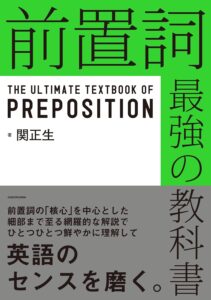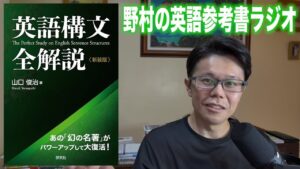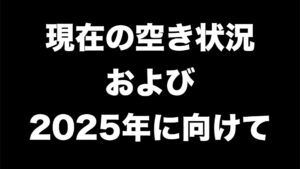とうとう二次試験ですね。
和訳や長文でポイントになる英文を解説します。偏差値は55~60くらいを想定です。
問題
以下の英文の文構造と和訳を考えてみましょう。
Being familiar with the methods scientists apply to communicate their findings succinctly assists individuals to comprehend their research.
単語と品詞
Being: であること(動名詞)
familiar: 熟知している (形容詞)
with: ~と (前置詞)
the:その (冠詞)
methods: 手法 (名詞)
scientists: 科学者 (名詞)
apply: 適用する(動詞)
to: ~に (前置詞)
communicate: 〜を伝える(動詞)
their: 彼らの (代名詞の所有格)
findings: 発見 (名詞)
succinctly: 簡潔に (副詞)
assists: (人)を助ける (動詞)
individuals: 個人 (名詞)
to: ~に (前置詞)
comprehend: 理解する (動詞)
research: 研究 (名詞)
解説・考え方
記号:[名詞] (形容詞) <副詞> 【大きなカタマリ】
単語はsuccinctlyあたりが難しいかもしれません。
communicateは他動詞だと「〜を伝える」という意味なのは気付いたでしょうか。
文頭のVing
Being familiar with the methods scientists apply to communicate their findings succinctly assists individuals to comprehend their research.
まず、文頭でVing(今回はbe動詞のing形 = Being)ときたら動名詞か分詞構文なはずです。
チラッと右側を見るとカンマは無いようなので、たぶんbeingは動名詞で主語になっているかなぁと推測しつつ読んでいきます。
もし間違えっていたら修正します。
次にfamiliar withと来ているので、be familiar with ~で繋がっていると判断します。
関係代名詞の省略
Being familiar with the methods scientists apply to communicate ~
まで読むと、
the methods scientists apply to ~
名詞+名詞+動詞 + to Vとなっています。
【名詞+名詞+動詞+@名詞の欠落】ときたら、名詞と名詞の間に関係代名詞が省略されているので、前の名詞に後ろの文をかけて訳せばOKです。
ただし、まだ後ろを見ないと判断できません。
怪しいと思いつつも後ろを見て、apply to Vは「Vすることを申し込む」という意味なので、意味的には少し変だなぁと感じます。
少し読み進めます。
Being familiar with the methods scientists apply to communicate their findings succinctly assists ~
communicate their findings「発見を伝える」は意味的に繋がっているので、これはカタマリとして処理でいいでしょう。
succinctlyは「簡潔に」なので、
・簡潔に伝える
・簡潔に助ける
assistよりもcommunicateにくっついている気がするので、そうしておきます。
そうすると、
apply to Vではなく、
to communicate their findings succinctly「発見を簡潔に伝えるために」と訳した方がいい気がしてきました。
このto は「名詞のカタマリ」になりそうも無いですし、前に名詞もない(=形容詞的用法として前の名詞にかかる可能性がない)ので、副詞的用法の「ために」と訳した方が良さそうです。
となると、もう一度読むと、
Being familiar with the methods scientists apply [@名詞欠落] <to communicate their findings succinctly]
やはり赤字部分は【名詞+名詞+動詞+@】となっています。@は名詞欠落です。
関係代名詞の省略は、
①名詞+名詞+動詞
② @名詞の欠落
この2点セットが必要です。
となると、
Being familiar with the methods (scientists apply [@名詞欠落] <to communicate ~>) assists
[(<〜を伝えるために>科学者が用いる)方法に慣れ親しむこと]はassistsが動詞でsが付いているので、Beingからassistsの手前までが主語かなと判断します。
ここまでの構造
[Being familiar with the methods (which scientists apply @ <to communicate their findings succinctly>)] assists individuals to comprehend their research.Being から succinctlyまでが主語と仮定して読み進めます。
続き
assistsが動詞だと分かったので、後ろを見ていきます。
[Being familiar with the methods (which scientists apply @ <to communicate their findings succinctly>)] assists individuals to comprehend their research.
assist 人 to V「人がVすることを助ける」に気づけたら、ほぼ完了です。
実はassistはhelpと似ています。英語では意味が似ている単語は形も似ることが多々あります。
-----
①help 人 with X ≒ assist 人 with X
②help 人 (to) V ≒ assist 人 to V
③help 人 in Ving ≒ assist 人 in Ving
-----
このように同じような形を取ります。
解答と和訳
[Being familiar with the methods (which scientists apply @ <to communicate their findings succinctly>)] assists individuals [to comprehend their research]. [(科学者が<自分の発見を簡潔に伝えるために>用いる)方法に熟知していると、個人が彼ら(研究者)の研究を理解するのに役立ちます。
applyは「適用」の「用」を使って、「用いる」にしました。「使う」でもいいと思います。
全体としてはSVOC⑤(⑤=5文型)で、
[Being ~]がSassistがV
individualsがO
[to comprehend ~]がCです。
以上です。
リンク元のいいねとYouTubeのチャンネル登録もよろしくお願いいたします😊








